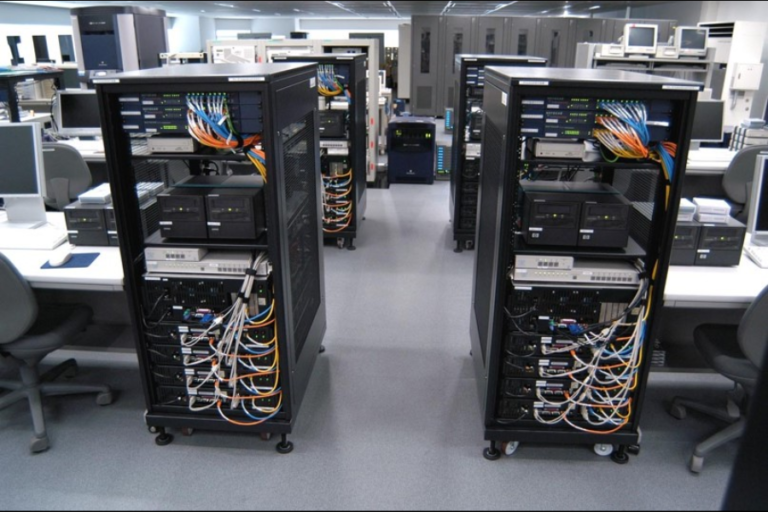Understanding vRealize Infrastructure Navigator: A Complete Guide
In the world of virtualized environments, having a clear picture of how systems, applications, and services interact is essential for smooth operations. One powerful tool designed to provide this visibility is vRealize Infrastructure Navigator. This solution helps administrators understand relationships, dependencies, and communication paths inside a virtual infrastructure, enabling better management and informed decision-making.
What is vRealize Infrastructure Navigator?
vRealize Infrastructure Navigator is a VMware product that integrates with vCenter to automatically map and display application dependencies in a virtual environment. It is essentially a discovery and mapping tool that shows which virtual machines are talking to each other, what services they run, and how they connect. This information can be critical when planning upgrades, troubleshooting, or ensuring compliance with IT policies.
Initially known as vCenter Infrastructure Navigator, the tool evolved as part of the vRealize suite. Its primary value lies in its ability to give real-time insights without requiring agents to be installed on every machine, reducing complexity for administrators.
Why Use vRealize Infrastructure Navigator?
Running a virtualized infrastructure without knowing the interconnections between components is like managing a city without a map. vRealize Infrastructure Navigator provides that map for virtual machines and applications. Here are some key benefits:
- Dependency Mapping: Identifies how applications and systems depend on each other.
- Change Impact Analysis: Predicts potential effects before making infrastructure changes.
- Troubleshooting Assistance: Helps isolate issues by showing affected systems and services.
- Compliance and Security: Ensures that only approved connections and services are running.
By using vRealize Infrastructure Navigator, administrators reduce the risk of unexpected outages caused by changes in the virtual environment.
How vRealize Infrastructure Navigator Works
The tool integrates tightly with VMware vCenter Server. Once deployed, vRealize Infrastructure Navigator scans the virtual machines in the environment and automatically detects:
- Running services
- Open network ports
- Communication flows between systems
It builds an application dependency map that can be viewed directly within the vSphere Web Client. This map updates automatically as changes occur, ensuring that administrators always have an up-to-date view of the environment.
The tool relies on network traffic analysis and VMware Tools data to discover these relationships. Unlike manual documentation, this process is dynamic and reduces the need for repetitive, error-prone mapping work.
Deployment and Configuration
Setting up vRealize Infrastructure Navigator is straightforward but requires integration with vCenter. The high-level steps include:
- Download and Deploy the Appliance: The tool is packaged as a virtual appliance for easy installation.
- Integrate with vCenter Server: Configure the connection to your vCenter instance.
- Enable Access and Permissions: Assign appropriate roles for users who will view and manage dependency data.
- Scan and Discover: Allow the tool to start mapping dependencies automatically.
Administrators can also configure vRealize Infrastructure Navigator to enable secure communication, such as SSH access for maintenance, depending on organizational requirements.
Practical Use Cases
There are several real-world situations where vRealize Infrastructure Navigator proves invaluable:
1. Migration Planning
When moving workloads to new hosts, clusters, or even data centers, knowing the full list of dependencies ensures nothing is left behind.
2. Troubleshooting
If a web application is experiencing issues, the tool can show all backend systems it connects to, allowing administrators to quickly isolate potential problem points.
3. Compliance Auditing
In highly regulated industries, showing a visual map of approved communication flows can satisfy audit requirements and demonstrate adherence to security standards.
4. Disaster Recovery Testing
When simulating a recovery scenario, administrators can verify that all necessary systems and services are accounted for in the failover process.
Security Considerations
Like any management tool, vRealize Infrastructure Navigator must be secured. Administrators should:
- Restrict access to authorized personnel.
- Enable encrypted communication channels.
- Regularly update the appliance to fix potential vulnerabilities.
- Monitor logs for unusual activity.
Because the tool reveals detailed information about network services and connections, unauthorized access could expose sensitive architectural details. Proper security hygiene ensures this risk remains low.
Limitations to Keep in Mind
While vRealize Infrastructure Navigator offers powerful insights, it’s important to understand its limitations:
- It works best with VMware environments and may not fully support non-VMware systems.
- Discovery is based on network communication, so certain dependencies that use unconventional protocols may not be mapped.
- It requires vCenter Server, so standalone ESXi hosts cannot use it without integration.
The Future of Application Mapping in VMware
As cloud and hybrid environments grow, application mapping tools like vRealize Infrastructure Navigator are evolving. Future trends may include:
- Integration with cloud-native services.
- More advanced analytics driven by AI.
- Real-time anomaly detection for proactive issue resolution.
These enhancements will make it even easier for administrators to understand complex, distributed application landscapes.
Conclusion
vRealize Infrastructure Navigator is more than just a visualization tool—it’s a critical component for managing, securing, and optimizing virtual environments. By offering automated application dependency mapping, it eliminates guesswork, reduces risk, and supports informed decision-making. For any organization running VMware-based infrastructure, this tool can become a trusted ally in maintaining stability and efficiency.
When deployed and managed correctly, vRealize Infrastructure Navigator transforms infrastructure management from reactive firefighting to proactive control. Whether you are planning migrations, performing audits, or troubleshooting complex systems, the visibility it provides is invaluable.




